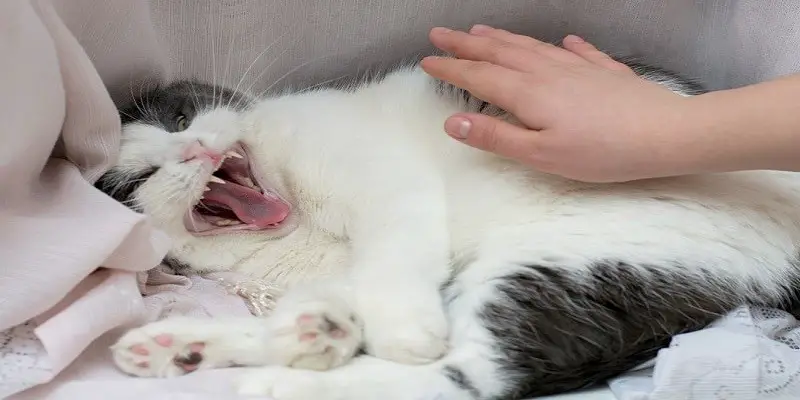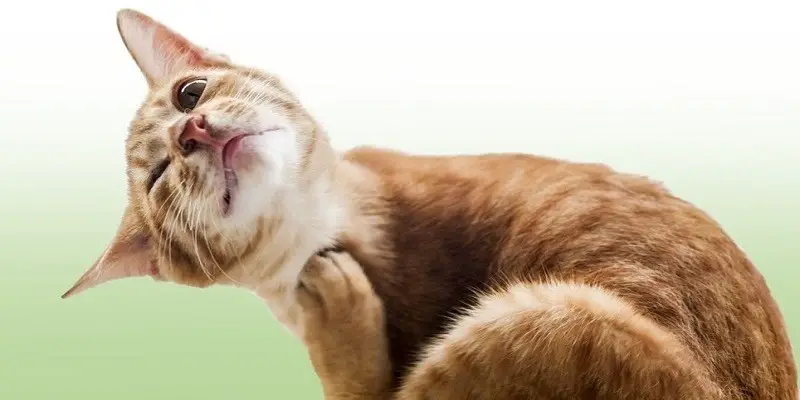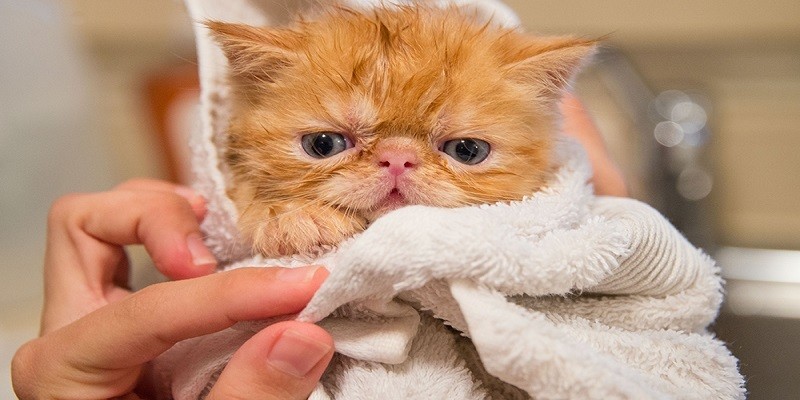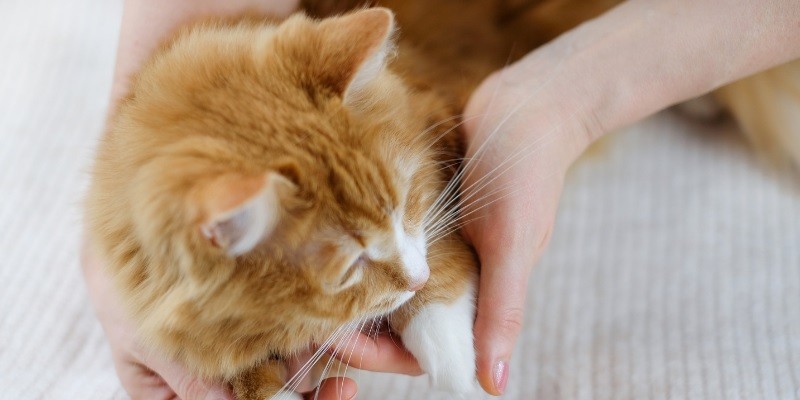Last Updated on May 23, 2023 by Pauline G. Carter
Cats may not like to be pet due to various reasons such as fear, discomfort, or pain. Understanding the cat’s body language and respecting their boundaries is crucial when it comes to petting them.
Petting a cat can be a satisfying experience for both the cat and the owner. However, it may not always be the case, especially for those who own cats that do not like petting. It can be frustrating for the owner, leading to the cat feeling distressed or even aggressive.
To avoid this, it’s essential to understand the reasons behind a cat’s dislike for petting. In this article, we will explore some of the reasons and tips to help make petting a more pleasurable experience for both you and your furry feline friend.
Understanding Feline Body Language
Cats are fascinating creatures and it is important to understand how they communicate with us. Feline body language is complex and nuanced, but with a little knowledge, you can gain important insights into your cat’s behavior. Here are some key points that you should keep in mind when trying to decipher the signals your cat is sending you.
Overview Of Cat Behavior
Before we dive into the specifics of body language, it’s important to understand some general cat behavior. Some cats simply don’t like to be petted, while others only enjoy it on their terms. Some may get overstimulated easily or may be experiencing pain.
Understanding these general behaviors can help you better interpret your cat’s body language and signals.
The Importance Of Understanding Body Language
When cats are uncomfortable or stressed, they may display certain physical signs that can help you recognize and address their needs. Understanding feline body language can foster better communication between you and your cat, increase your bond, and help you avoid accidental injury caused by a stressed-out feline.
Specific Ways Cats Communicate Their Discomfort With Petting
Cats are not always straightforward in how they communicate. However, there are some signals that are generally understood. Here’s a brief rundown of some warning signs that your cat may not be enjoying being petted:
- Tense body, with back arched and fur standing up
- Tail twitching or thumping
- Constantly looking around, with wide eyes or dilated pupils
- Ears flattened or pointed backward
- Growling, hissing, or vocalization
- Swatting of hand or biting
By recognizing these signals, you can help ensure that your cat gets the space and respect they need in order to feel safe and comfortable. Being mindful of your cat’s body language can go a long way towards building a healthy and happy relationship with your feline pal.
Potential Reasons For Discomfort
Cats are known for being quite particular when it comes to accepting affection from their human companions. While some felines may happily curl up in their owners’ laps for hours on end, others may sprint in the opposite direction at the first sight of a hand reaching toward them.
If your cat is the latter, you may be wondering why they don’t like to be pet. In this blog post, we will explore potential reasons for your kitty’s discomfort with physical contact, including:
Sensitivity Due To Health Issues
Just like people, cats may experience physical discomfort or pain, which can make them less receptive to being pet. If your feline friend suddenly starts avoiding affectionate contact, it may be worth taking them to the vet to see if there is an underlying issue.
Some common health problems that can cause sensitivity in cats include:
- Arthritis
- Dental issues
- Skin conditions
- Ear infections
- Digestive problems
Previous Negative Experiences With Petting
If your cat was mishandled or manhandled in the past, it could cause them to become skittish or uncomfortable when being petted. This could be a result of early traumatic experiences, such as being grabbed too hard or cornered by a child or other pet.
Unfortunately, cats are not as forgiving as dogs, and it may take time and patience to rebuild their trust in you.
- Approach your cat calmly and gently, letting them come to you rather than forcing contact.
- Offer treats as a positive reinforcement for allowing you to pet them.
- Respect your cat’s body language and signals, such as flattened ears or a twitching tail, which may indicate discomfort or aggression.
Lack Of Socialization
Kittens who do not receive adequate socialization at an early age may struggle to form trust bonds with their owners later in life. This can result in cats who are skittish or afraid of being handled, including petting.
- Spend time interacting with your kitten from a young age, offering gentle petting and positive reinforcement for calm behavior.
- Introduce your kitten to new people, animals, and environments to help build their confidence and social skills.
Territoriality Or Overstimulation
Cats are territorial animals, and may become stressed or anxious if they feel their space is being invaded. This can include physical contact, such as petting, especially if they are already feeling overstimulated.
- Look for signs that your cat may be overstimulated, such as dilated pupils or an increased heart rate.
- Respect your cat’s boundaries, and avoid petting or handling them in a way that makes them uncomfortable.
- Provide your cat with plenty of hiding spots and elevated perches they can retreat to when they need alone time.
If your cat doesn’t seem to like being pet, there could be a number of potential reasons for this. It’s important to understand and respect your cat’s boundaries, and work with them to rebuild trust if necessary. By taking the time to learn about your cat’s preferences and body language, you can build a stronger and more positive relationship with them over time.
Solutions For Improving The Petting Experience
The Importance Of Respect And Consent
Cats are independent creatures that enjoy their personal space, and they don’t like being petted all the time. It’s essential to understand your cat’s body language and their behavior to know when they’re comfortable or not. Here are some key points to keep in mind when it comes to respecting your cat’s boundaries:
- Don’t force your cat to interact with you or to be petted.
- Observe your cat’s body language and behavior before and during petting.
- Pay attention to their facial expressions, ears, eyes, and tail movements.
- If your cat moves away or shows signs of discomfort, stop petting immediately.
- Create opportunities for your cat to initiate interactions.
Introducing Touch Through Play
Cats often use playtime to build trust and form bonds with their owners. Play is also an excellent way to introduce touch and familiarize your cat with being petted. Here are some ways to introduce touch through play:
- Use interactive toys that require your cat to be touched or brushed.
- Incorporate petting as part of playtime by gently stroking your cat in areas they enjoy being petted.
- Gradually increase the duration of petting while playing to build your cat’s tolerance.
Scheduling Consistent And Brief Petting Sessions
Cats prefer consistency and routine, so it’s important to schedule petting sessions regularly. However, keep the petting brief to avoid overwhelming or irritating your cat. Here are some tips for scheduling petting sessions:
- Set a specific time for petting, so your cat knows what to expect.
- Keep the petting session short, about 5-10 minutes, and gradually increase the duration over time.
- Pay attention to your cat’s behavior and body language during the session and stop if they show any signs of discomfort.
Providing A Range Of Safe And Comfortable Spaces For Your Cat
Cats need safe and comfortable spaces where they can relax and retreat when they need to be alone. Here are some ways to create a comfortable environment for your cat:
- Provide a variety of spaces, such as cat trees, cozy beds, and hiding spots, where your cat can rest and observe their surroundings.
- Avoid disturbing your cat when they retreat to their safe space.
- Use positive reinforcement by rewarding your cat when they approach new areas or spaces.
Consulting With A Veterinarian Or Animal Behaviorist
If your cat’s behavior is causing concern or is persistent, it’s essential to seek professional advice from a veterinarian or an animal behaviorist. Some medical conditions may cause discomfort or pain, while certain behaviors could be due to underlying behavioral issues.
Consulting with an expert can help you understand your cat’s behavior and improve your relationship with them.
Remember, patience and respect are key when it comes to petting your cat. Through play, positive reinforcement, and consistent communication, you can improve the petting experience and strengthen your bond with your feline friend.
Frequently Asked Questions Of Why Does My Cat Not Like To Be Pet?
Why Doesn’T My Cat Like To Be Pet?
Cats have boundaries and preferences- consider signs she’s giving you and what areas she enjoys petting.
Can I Train My Cat To Like Being Pet?
Yes, using cat-friendly techniques such as treats and praise with frequent, positive interaction can increase comfort.
What Might Be Causing My Cat’S Aversion?
Possible reasons may include physical discomfort, prior trauma, or simply feeling in the mood for alone time.
What’S The Best Way To Approach My Cat?
Observe body language and always let cat take lead in interactions. Avoid approaching head on or picking up.
Should I Force Pet My Cat If They Don’T Enjoy It?
No. It can be harmful to your cat’s trust, create fear, anxiety, and even aggression. Respect their boundaries.
Conclusion
We have discussed several reasons why your cat might not like to be pet, ranging from physical discomfort to behavioral issues. It is essential to understand that every cat has its unique personality, preferences, and boundaries. Therefore, it is crucial not to force your cat to engage in any physical interaction if it shows signs of discomfort.
Instead, we can provide them with an environment that enables them to feel safe and secure, provide them with mental and physical stimulation, and allow them to approach us for affection when they are ready. By respecting our cat’s boundaries and preferences, we can maintain a healthy and happy relationship with our feline companions.
Remember, cats are independent creatures, and we should give them the space and time needed to thrive on their terms.
About Author (Pauline G. Carter)

Pauline G. Carter is a well-known pet blogger who has written about the world of pets for several years. She is passionate about pets, from cats and dogs to birds, reptiles, and poultry. Her blog, which is updated regularly, is filled with articles and guides on pet care, nutrition, and training. She also shares her experiences and observations on pet ownership, making her blog relatable and informative for pet lovers. She is a true animal advocate and is dedicated to promoting responsible pet ownership. Let’s Go …





